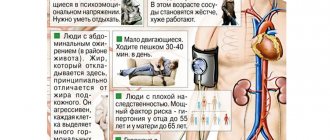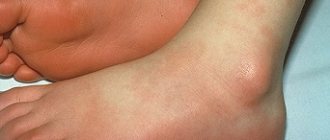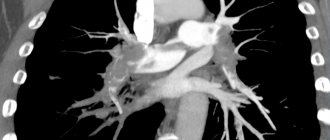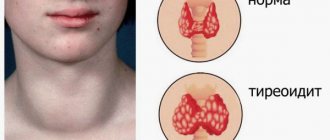Inflammation
Inflammatory causes of ear congestion:
- external otitis of any etiology (fungal, bacterial, viral);
- eustacheitis (tubootitis);
- catarrhal otitis media, bullous otitis (with influenza);
- purulent otitis media (including chronic);
- exudative otitis;
- adhesive otitis media
With inflammation in the nasal cavity, paranasal sinuses or pharynx, swelling of the nasopharyngeal mouth of the auditory tube occurs, due to which the pressure in the tympanic cavity and the environment ceases to equalize, and the drainage function of the auditory tube is disrupted. The infectious agent, together with the discharged contents from the nasal cavity and paranasal (paranasal) sinuses, enters the auditory tube and tympanic cavity, causing inflammation of the auditory tube - eustacheitis (tubo-otitis) and otitis media.
Due to inflammation, swelling of the mucous membrane of the middle ear and eardrum occurs, sound-conducting mechanisms stop working normally, and ear congestion occurs, and hearing decreases. A common cause of dysfunction of the auditory tube and the development of otitis in children is hypertrophy of the nasopharyngeal tonsil and adenoiditis. In adults, vasomotor and allergic rhinitis and deviated septum are common causes of swelling at the mouth of the auditory tube. The cause may also be a violation of blood circulation and innervation in the inner ear.
With inflammation in the external auditory canal, swelling of its walls appears, fungal or purulent masses clog the ear canal, and the surface layers of the eardrum become inflamed (myrinigitis). Because of this, the mobility of the eardrum, necessary for proper sound transmission, is reduced.
Most of the described forms of otitis often occur as complications of acute respiratory diseases, sinusitis, rhinitis, especially in the case of improper cleansing of the nasal cavity. In addition to the feeling of congestion during otitis media, shooting, sharp or aching pains, hearing problems, bloody, fungal, purulent discharge, itching, a feeling of pulsation or fluid transfusion in the ear can be added.
A feeling of ear fullness also occurs when:
- water getting into the ears (usually when swimming), the water usually evacuates on its own and does not require intervention;
- when a cerumen or epithelial plug forms (can also occur after water gets into the ear due to swelling of the cerumen plug);
- foreign bodies getting into the ears: insects, earbuds, cotton wool from cosmetic sticks, etc.
After eliminating the provoking factor, the discomfort disappears and hearing is restored.
Prevention
Often, after quick relief or after the unpleasant sensations in the head subside on their own, a person calms down and does not take any measures to prevent a repeat attack. At the same time, a radical revision of your entire lifestyle is the most important step towards good health.
Therapeutic measures to eliminate heaviness in the head must necessarily be supplemented by normalizing the work and rest regime. The duration of sleep should be limited to 8 hours, and time for physical activity should be included in the daily routine. It is necessary to spend more time in the fresh air and, if possible, give up bad habits.
Only such an integrated approach to solving the problem will help you get rid of the heaviness in your head and maintain the clarity of consciousness and thinking necessary for a full life.
Sign up at the MART medical center in St. Petersburg (see map) by calling 8 or leave a request on the website.
Sensorineural hearing loss
The cause of hearing loss and a feeling of fullness in the ears may be sensorineural hearing loss, which occurs as a result of a violation of the blood supply or innervation in the inner ear.
Sensorineural hearing loss can result from:
- changes in blood pressure due to hypertension;
- acute viral diseases;
- barotrauma;
- fracture of the base of the skull;
- ischemia of the central areas of the auditory analyzer;
- neuroma of the vestibulocochlear nerve;
- compression from the outside by neoplasms and vascular aneurysms.
Symptoms of ear congestion
Associated symptoms for various ear diseases:
| Cause | Symptoms | |||||||
| Pain | Ear discharge | Itching | Hearing loss | Autophony | Noise | Sensation of fluid transfusion | Manifestations of general intoxication | |
| Sulfur plug | No | No | Not really | Yes | Not really | Not really | No | No |
| Otitis externa | Yes | Not really | Yes | Yes | Not really | No | No | Not really |
| Tubootitis | Not really | No | No | Yes | Yes | Not really | No | Not really |
| Otitis media | Yes | No | No | Yes | Yes | Not really | No | Yes |
| Suppurative otitis media | Yes | Yes | Not really | Yes | Not really | Not really | No | Yes |
| Exudative otitis media | No | No | No | Yes | Yes | Not really | Yes | No |
| Sensorineural hearing loss | No | No | No | Yes | Not really | Yes | No | No |
Diagnosis of ear congestion
Standard examinations for any ear pathology:
- video endoscopy or microscopy of the ear;
- video endoscopy of the nose and nasopharynx;
- audiometry;
- tympanometry;
If necessary, additional studies are prescribed:
- computed tomography or magnetic resonance imaging of the temporal bones and brain;
- culture of nasal discharge and external auditory canal for flora and sensitivity to antibiotics;
- general blood test, blood glucose (other additional laboratory tests are possible after consulting a doctor);
- Doppler ultrasound of neck vessels;
- consultations with other specialists.
Treatment
Treatment for ear congestion and otitis media involves treating the underlying cause of the disease:
- in case of an inflammatory process in the nasal cavity and paranasal sinuses, antibacterial therapy is prescribed, in addition, lavage of the nasal cavity is prescribed, which eliminates the discharge of discharge into the auditory tube during self-washing, treatment with a YAMIK catheter, puncture of the maxillary sinuses, physiotherapy;
- if a chronic pathology of the nasal cavity or nasopharynx is detected, leading to the closure of the mouth of the auditory tube, surgical treatment is performed (adenotomy, vasotomy, septoplasty, etc.);
- To remove wax plugs or foreign bodies, the doctor performs lavage (under visual control) or instrumental removal of the foreign body;
- for external otitis, the outer ear is washed and its walls are treated with antifungal and antibacterial drugs;
- in case of dysfunction of the auditory tube or exudate in the tympanic cavity, medical procedures are necessary: pneumomassage of the tympal membrane, blowing of the ears according to Politzer, catheterization of the eustachian tube, paracentesis or shunting of the eardrum;
- for sensorineural (sensorineural) hearing loss, a course of vascular and vitamin therapy is prescribed to improve the nutrition of the inner ear and brain.
Methods for treating heaviness in the head
As already mentioned, heaviness in the head in itself is not a disease. This is only a symptom, and it is the root cause of this condition that needs to be treated.
Treatment of the underlying disease is specific, selected taking into account the individual characteristics of the patient’s body and entirely depends on the identified disorders.
However, symptomatic treatment of heaviness in the head and similar accompanying symptoms is also possible. Most often, non-steroidal anti-inflammatory drugs, analgesics, antispasmodics and other drugs are used in therapy to relieve discomfort. In some cases, they resort to blockades.
However, do not forget that long-term drug treatment is addictive, and the drugs lose their effectiveness over time. So this approach to treatment can be truly justified only in a situation where heaviness in the head is caused by serious organic lesions. In other cases, it is recommended to solve the problem, if possible, through safer therapeutic methods without the use of “chemistry”.
Thus, heaviness in the head can be easily eliminated with the help of self-massage of the biologically active zones of the back of the neck, the back of the head, the temporal region, and the crown. Impact on these areas not only relieves tension from the neck muscles, but also stimulates the flow of fresh blood, which helps improve well-being and restore performance.
In addition, you should pay attention to a number of treatment methods that have proven effective in improving blood flow in the cervical spine and normalizing blood supply to the brain. First of all, these include manual therapy and all kinds of physiotherapeutic procedures.
Physical therapy exercises can also give good results in the fight against heaviness in the head, drowsiness, fatigue and other associated symptoms. Physical activity helps saturate the blood and tissues with oxygen. In addition, regular performance of even simple exercises allows you to strengthen the muscle corset and, accordingly, reduce the load on the spinal column itself and protect it from the development of destructive processes.
Basic treatment regimens for ear pathology*
| Pathology | Basic treatment methods |
| Sulfur plug | Removal by rinsing or instrumental removal. |
| Otitis externa | Toilet of the external auditory canal, treatment with medications, ear drops, vasoconstrictor nasal sprays, systemic antibacterial or antifungal therapy, FTL**. |
| Tubootitis | Vasoconstrictor nasal sprays, blowing of the eustachian tubes according to Politzer, pneumomassage of the eardrum, FTL**, catheterization of the auditory tubes if necessary. |
| Otitis media | Vasoconstrictor nasal sprays, systemic antibacterial therapy, ear drops, Politzer ear blowing, pneumomassage of the eardrum, FTL**, if necessary, catheterization of the auditory tubes, lavage of the nasal cavity using the moving method. If necessary, surgical treatment - eardrum bypass or paracentesis. Complemented by the treatment of diseases of the ENT organs. |
| Suppurative otitis media | Vasoconstrictor nasal sprays, systemic antibacterial therapy, ear drops, Politzer blowing, if necessary, transtympanic injection of drugs, catheterization of auditory tubes, nasal lavage using the displacement method. If necessary, surgical treatment - eardrum bypass or paracentesis and other operations, FTL**. It is supplemented by treatment of pathologies of the nasal cavity, nasopharynx and paranasal sinuses, if indicated. |
| Exudative otitis media | Vasoconstrictor nasal sprays, mucolytics, Politzer blowing, catheterization of auditory tubes. If necessary, surgical treatment - eardrum bypass or paracentesis, FTL**. It is complemented by the treatment of pathologies of the nasal cavity, nasopharynx and paranasal sinuses. |
| Sensorineural hearing loss | Catheterization of auditory tubes, systemic vascular and vitamin therapy. |
*These treatment regimens are not a recommendation for self-treatment and serve to familiarize patients with basic treatment methods. The final decision on treatment and examination methods is made by the doctor after the examination!
** FTL – physiotherapeutic treatment.
Types of otitis
Depending on the direction of the pain, it is customary to distinguish 3 types of otitis: external, middle and internal otitis.
Otitis externa most often appears as a result of mechanical damage to the auricle or external auditory canal. The following symptoms are characteristic of external otitis of the ear: aching, dull pain, swelling of the ear, and a slight increase in temperature.
Otitis of the middle ear is an inflammatory disease of the air cavities of the middle ear: the tympanic cavity, the auditory tube and the mastoid process.
Internal otitis is untreated otitis media of the middle ear. With internal otitis, inflammation of the inner ear occurs and the entire vestibular apparatus is damaged.








